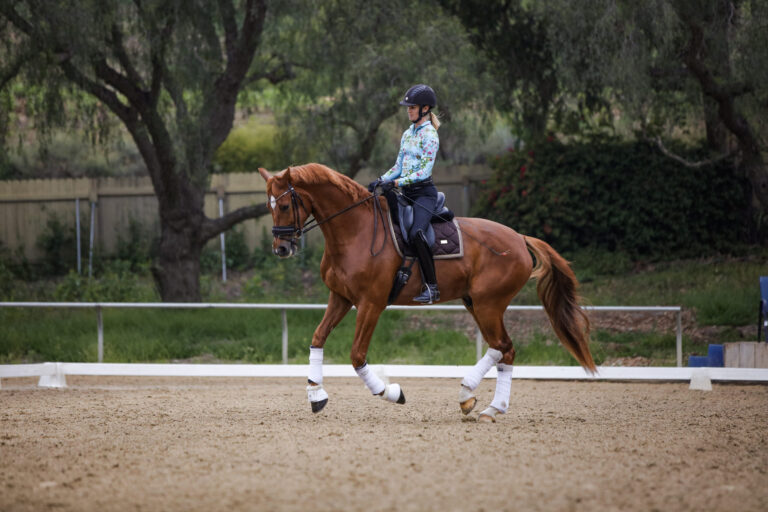Fly season is just around the corner, and if you’ve not yet marshaled your defensive plan, now’s the time. To help you in this task, we’ve put together a summary of methods and products designed to hold fly populations at bay and keep your horses comfortable throughout the tail-swishing season.

Fly-Free Zone?
Everyone knows flies are a fact of life when you have horses. Is it really worth the effort it takes to combat them?
Yes, it is. Flies are not just a nuisance, though they are indeed your horses’ most annoying pest. Flies represent a health threat, too, as they’re highly effective at spreading diseases, including influenza,equineinfectious anemia, pigeon fever (dryland distemper), salmonella, and vesicular stomatitis (a virus that causes painful mouth ulcers).
Then, too, your horses’ constant shoo-fly stamping can loosen shoes and aggravate impact-related injuries, such as arthritis and ringbone.
If fly infestations are severe enough, they can even cause horses to lose weight because of interrupted grazing time and lost sleep, or result in injuries as insect-crazed animals attempt to seek relief.
So, although you can’t completely eradicate these pests, it’s well worth the investment of time, effort, and resources to keep your horses’ environment as fly-free as possible.
Your First Line of Defense
…against flies is good stable management. There are several things you can do to discourage flies from setting up camp in your barn area in the first place, so grab your apple fork and read up on the basics.
- Remove that manure. Houseflies, your horses’ most common fly pest, are drawn to fresh droppings. This is where they prefer to mate and lay eggs; the resulting larvae feast on the feces. To keep that from happening, clean your horses’ stalls and pens daily, removing the manure to an off-site location once a week if possible, or covering the pile with a heavy tarp for later removal.
- Minimize moisture. Several fly species prefer wet areas for breeding as well as drinking. Keep stalls dry; eliminate standing puddles around your horses’ living areas; get rid of inadvertent water receptacles?old tires, no-longer-used buckets and feeders, etc.
- Cover consumables. Place all fly-attracting garbage in containers with bug-proof lids; keep grains, concentrates, and treats securely stored.
- Offer shade, air. A breezy, shaded area will help your pastured horses avoid flies; for stabled equines, barn fans are great fly-chasers.
For a Well-Rounded Attack…
…consider one or more of these additional fly-fighting products or services. Combine one or more of the methods described here with your good, basic stable management, and you’ll truly keep the bugs around your barn to a minimum.
Barn Spray System
The lowdown. These mechanized systems automatically mist a fast-acting natural insecticide (pyrethrum) throughout your barn several times a day, killing and/or repelling flies. The main unit and connected tubing and nozzles are installed by the barn-spray company.
Things to think about. Once installed, spray systems are highly effective and hassle-free. Pyrethrum is environment-friendly, as it biodegrades within 30 minutes of spraying.
Cost. Varies by manufacturer and model, but spray systems do come with a relatively high initial price. The average monthly usage is quite reasonable; at about a gallon of insecticide per nozzle, it comes to about $5 per stall, per month.
Topicals
The lowdown. These products–which include sprays, roll-ons, wipe-ons, and “spot-ons” that you dab down the spine–provide a contact repellent or vapor barrier to make your horses less attractive to flies.
Things to think about. Topicals are best regarded as “necessary but not sufficient”–they add greatly to your horses’ comfort but can’t keep fly populations down on their own. That means you’ll likely need another fly-fighting option (plus good stable management, of course) for adequate control. Some topicals are water-resistant and also repel ticks.
Cost. Varies widely, but in general the lower the cost, the shorter the duration of protection.
Barriers
The lowdown. These items–masks, sheets, boots–provide a barrier between flies and your horses’ bodies.
Things to think about. Anti-flywear requires putting on and taking off every day. As a bonus, some masks and sheets may also offer sun protection?good for horses with exposed pink skin.
Cost. Varies, but in general: masks, $10 to $30; sheets, $60 to $150; boots, $40 to $60 for a set of four.
Feed-Throughs
The lowdown. Mixed into your horses’ grain ration, these pellets pass through their systems into their manure, where the active ingredient prevents fly larvae from developing to maturity. Flies never leave the manure.
Things to think about. This method is easy and effective. You’ll need to feed multiple horses separately, to make sure they consume the correct dosage. Allow two to four weeks to see results, and for best effectiveness, feed from early spring to late fall.
Cost. About 30 to 50 cents per day, per horse.
Biological Control
The lowdown. With this ingenious, natural approach to fly control, tiny, low-flying wasps (fly parasites) use fly pupa (cocoons) as a host, thereby killing the flies before they hatch.
Things to think about. The method is completely environment-friendly and uses no chemicals. Fly parasites don’t bite people, horses, or pets. Allow 30 days for noticeable effect. Best if started in early spring, release new parasites every three to four weeks. If you opt for fly parasites, be careful how you use topical fly sprays to avoid killing the good bugs, too.
Cost. Under $20 per month for one to five horses; under $30 per month for six to 10 horses.
Traps
The lowdown. Bait or other attractants lure flies into traps or onto sticky surfaces, where they perish.
Things to think about. You must know which type of flies you have and select traps accordingly.
Cost. Varies, but can range from 30 cents to $8 for sticky traps, and from $4 to $18 for enclosure traps.











